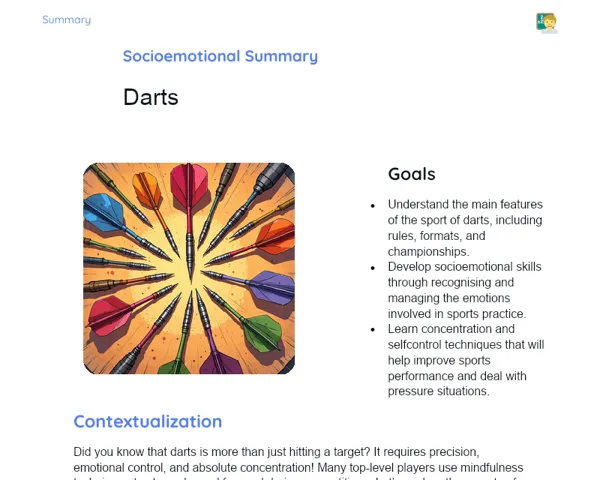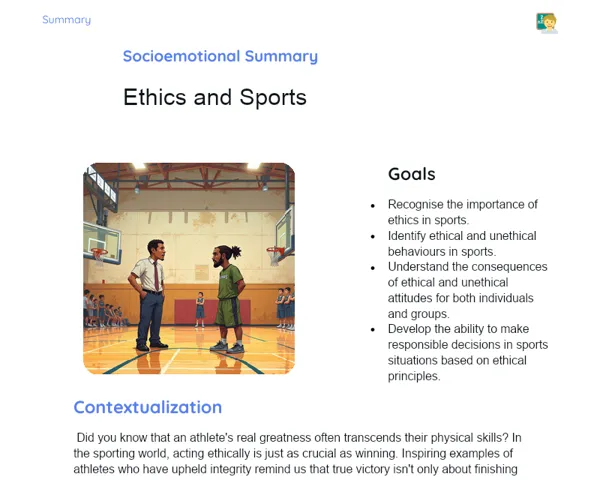Summary Tradisional | Track and Field
Contextualization
Athletics is one of the oldest sports in the world, with origins tracing back to Ancient Greece, where it featured prominently in the first Olympic Games of 776 BC. This sport includes a variety of events that assess different physical capabilities such as strength, speed, endurance, and precision. Some of the standout events include sprints, walks, throws, and jumps, each with its own unique rules and techniques.
Athletics holds a significance that extends beyond mere competition. Its accessibility makes it widely practised in schools and communities across South Africa, offering numerous physical and mental health benefits. By gaining an understanding of the various events and their corresponding rules, students can appreciate the breadth and richness of athletics while recognising the positive effects that regular participation in the sport can have on their health and well-being.
To Remember!
Sprints
Sprints are among the most popular events in athletics, covering races of varying distances that challenge a range of physical abilities. Key sprint events include the 100m, 200m, and 400m, which highlight maximum acceleration and explosive power. A strong start and the ability to maintain a high speed are vital in these races. Meanwhile, middle-distance events like the 800m and 1500m require a mix of speed and stamina, along with smart pacing strategies. Long-distance races such as the 5000m, 10,000m, and marathon need high levels of cardiovascular endurance, energy management, and a steady pace across extended distances.
Each type of sprint comes with specific regulations. For example, athletes in sprint events must remain in their assigned lanes for the entire race. In the case of middle-distance and long-distance events, runners can switch lanes after a certain distance, aiming to secure the best position while maintaining their pace and avoiding collisions.
Running techniques differ depending on the distance. For sprints, starting techniques from the blocks are crucial for optimal performance. In middle-distance and long-distance runs, conserving energy and executing effective passing is key to staying strong throughout the race.
Sprinting offers several benefits, particularly in terms of enhancing cardiovascular endurance, strengthening leg muscles, and improving lung capacity. Regular practice can boost overall health, increase aerobic capacity, and lower the risk of cardiovascular diseases.
-
Sprint events: 100m, 200m, 400m.
-
Middle-distance events: 800m, 1500m.
-
Long-distance events: 5000m, 10,000m, marathon.
-
Unique rules for each race type.
-
Diverse techniques based on distance.
-
Benefits for cardiovascular endurance and lung capacity.
Race Walking
Race walking is a distinct athletics discipline that diverges from running due to its specific movement technique. In this event, athletes must always have one foot on the ground, with the supporting leg remaining straight upon contact. This technique is closely monitored by officials during competitions, with any rule breach potentially leading to disqualification.
Common race walking distances include 20 km and 50 km for both men and women. These distances necessitate a blend of endurance, refined technique, and mental toughness, as the events can span several hours. Race walking typically occurs on closed circuits, whether on roads or tracks, and athletes need to maintain a steady pace whilst adhering to explicit technical rules.
Engaging in race walking cultivates both physical and mental skills that are different from those developed in running. The technique demands coordination, leg and core strength, and solid cardiovascular endurance. Regular practice can enhance posture, muscular endurance, and aerobic fitness.
The impact of race walking on the body is significant, particularly for building muscular and cardiovascular endurance. The technique also fortifies the stabilising muscles of the core and legs, promoting proper posture and efficient movement.
-
Key rules: one foot on the ground at all times, supporting leg straight.
-
Common distances: 20 km and 50 km.
-
Conducted on closed circuits.
-
Enhances coordination, muscle strength, and cardiovascular endurance.
-
Benefits for posture and muscle endurance.
Throws
Throwing events in athletics assess athletes' strength and skill in throwing various objects for distance. The major throwing events include shot put, discus throw, hammer throw, and javelin throw. Each event has specific techniques and rules that must be adhered to for a throw to be valid.
In shot put, athletes push a heavy metal ball from a 2.135-meter diameter circle, commonly using a rotational technique to spin within the circle before releasing the ball. The discus throw requires throwing a metal disc from a 2.5-meter diameter circle, using a similar rotational technique as in shot put.
Hammer throwing consists of tossing a heavy ball attached to a handle from the 2.135-meter diameter circle, requiring strength and coordination to spin the hammer multiple times prior to release. Javelin throw involves a short run-up before launching the javelin with a combination of speed, strength, and technique for maximum distance.
Throwing events greatly contribute to developing explosive strength, coordination, and specialised technique. Regular training strengthens the shoulder, arm, core, and leg muscles while enhancing motor coordination and the capacity to generate force rapidly.
-
Key events: shot put, discus throw, hammer throw, javelin throw.
-
Specific techniques and rules for each event.
-
Development of explosive strength and coordination.
-
Positive effects on shoulder, arm, core, and leg muscles.
Jumps
Jumping events in athletics consist of high jump, pole vault, long jump, and triple jump. Each of these events challenges athletes to achieve the highest or farthest distance possible using defined techniques and clear rules.
In high jump, athletes approach a horizontal bar and leap over it using methods like the Fosbury Flop, in which competitors arch their bodies over the bar backward. The height of the bar increases progressively until only those who can clear it are left.
Pole vault entails using a flexible pole to assist with jumping over a horizontal bar. This event demands a mix of speed, strength, and coordination to effectively utilise the pole and achieve impressive heights. The long jump involves running along a track and jumping into a sand pit, employing a takeoff and flight technique to cover maximum distance.
In triple jump, a sequence of three jumps (hop, step, jump) is performed on the track before landing in a sand pit. This event requires precise coordination and control for seamless transitions between each jump. The jumping events build explosive strength, coordination, and specialised technique, having a major impact on the muscles of the legs and core.
-
Events include: high jump, pole vault, long jump, triple jump.
-
Specific techniques for each event.
-
Development of explosive strength and coordination.
-
Effects on leg and core muscles.
Key Terms
-
Athletics: a collection of sports disciplines, including sprints, race walking, throws, and jumps.
-
Sprints: events assessing athletes' speed, endurance, and strategy across various distances.
-
Race Walking: an event requiring a unique technique of maintaining ground contact with one foot at all times.
-
Throws: events focused on the distance thrown using specific techniques.
-
Jumps: events testing athletes' capacity to achieve the maximum height or distance.
Important Conclusions
The lesson covered the essential events of athletics, including sprints, race walking, throws, and jumps, with a clear emphasis on each event's specific rules, techniques, and their physical effects on the human body. By understanding these various segments, students can better appreciate the complexity and diversity of athletics as well as the health benefits associated with engaging in these activities.
The insights gained about sprints, race walking, throws, and jumps can help students recognise the importance of proper training and techniques for effective performance and injury prevention. Furthermore, discussions on the physical effects highlighted how each event contributes to developing elemental skills such as cardiovascular endurance, strength, and coordination.
We encourage students to delve deeper into athletics, whether through participating in related activities or attending competitions to observe the techniques discussed in class. This exploration can further enhance their comprehension and appreciation of the sport while promoting an active and healthy lifestyle.
Study Tips
-
Review lesson materials, including slides and videos, to reinforce understanding of techniques and rules related to each athletics event.
-
Watch athletics competitions, such as the Olympics, to observe the techniques and rules in action.
-
Practice the discussed athletics events, even casually, to understand their physical impacts and develop practical proficiency.



